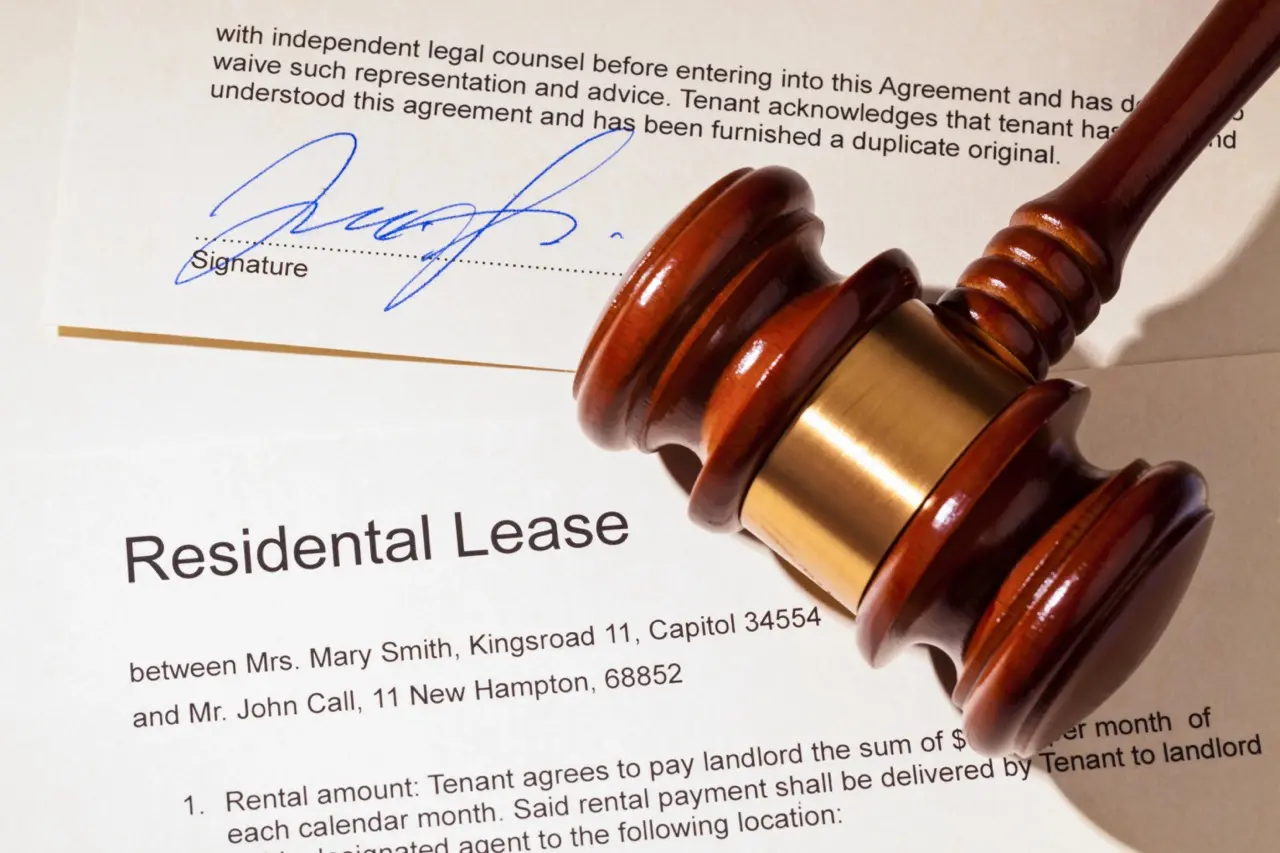Renting provides flexibility, but it carries risks. Events like break-ins, kitchen fires, or burst pipes can quickly damage your belongings. Many renters mistakenly believe their landlord's insurance covers them, but it only protects the building, not personal property or liability. Without renter's insurance, you're responsible for replacing items, covering repairs, and facing legal costs if someone is injured in your unit.
This guide explains what renter's insurance covers, why it's essential for every tenant, and how it protects you from unexpected financial setbacks.
Key Takeaways
- Renter's insurance protects your belongings and provides liability coverage that your landlord's policy doesn't provide.
- Policies typically include personal property, liability, additional living expenses, and medical payments.
- Most renters own $20,000-$30,000 worth of belongings, making coverage an affordable safeguard against financial loss.
- Liability coverage can protect you against lawsuits from injuries or property damage caused within your rental or by you elsewhere.
- You can tailor your policy with higher limits, replacement value coverage, or add-ons for high-value items and disasters.
What Exactly is Renter's Insurance?
Renter's insurance is like homeowner's insurance for tenants. While your landlord's policy covers the building structure, it doesn't protect your personal belongings or provide liability coverage if someone gets injured in your apartment. Renter's insurance is designed specifically for renters, whether an apartment, house, or room.
It protects your belongings and finances from risks like fire, theft, and water damage, helping to replace damaged or lost possessions up to your coverage limits. It typically includes liability coverage for injuries or property damage in your rented space. This insurance serves as a safety net, ensuring that an issue with your home doesn't lead to a financial crisis. It's important to understand that your landlord insures the building while you insure your personal belongings and liability.
Unpacking Your Coverage: What's Protected?
A typical renter's insurance policy, or HO-4, combines various coverages for comprehensive protection. Knowing these components helps you understand their value and what to expect when filing a claim.
Here's a breakdown of the core protections:
- Personal Property Coverage: This covers the repair or replacement of personal belongings damaged by covered perils, such as fire, theft, vandalism, and water damage from internal sources. High-value items like jewelry often require additional coverage through riders or floaters. It's essential to understand the difference between Actual Cash Value (ACV), which pays the item's current market value, and Replacement Cost Value (RCV), which reimburses you for purchasing a new item, typically at a higher premium.
- Liability Protection: Liability coverage acts as your financial shield if you're found legally responsible for injuries to others or damage to their property in your rented home. For example, if a guest slips and falls and sues, this coverage can help pay their medical bills and legal costs, typically starting around $100,000. It also extends to incidents outside your home caused by you, your family members, or even pets.
- Additional Living Expenses (ALE) / Loss of Use: If a covered event, like a significant fire, makes your rental uninhabitable, this coverage helps pay for increased living costs during repairs. It covers expenses like hotel bills, meals, laundry, and temporary rentals beyond your usual budget, ensuring you have a place to stay and can maintain your daily life without draining your savings.
- Medical Payments to Others: This policy offers limited coverage ($1,000 to $5,000) for minor medical expenses if a guest is injured in your rental, regardless of fault, to address minor incidents without liability claims or lawsuits.
Beyond the Basics: What Isn't Typically Covered?
While renter's insurance provides extensive coverage, knowing its limitations is crucial. Understanding what isn't covered can help prevent surprises during claims and highlight the need for additional insurance.
Standard renter's policies typically exclude coverage for:
- Damage to the Building Structure: Your landlord's insurance covers the building's structure, such as walls and roof, while your renter's policy does not cover these repairs.
- Certain Natural Disasters: Flood damage, outside water, and earthquakes are usually excluded from standard policies. If you live in a high-risk area, consider separate flood and earthquake insurance.
- Pest Infestations: Damage from pests like rodents, termites, or bed bugs, along with extermination costs, is usually not covered. Pest control is typically a maintenance issue and maybe the landlord's responsibility based on your lease and local laws.
- Tenant Negligence or Intentional Acts: Intentionally damaging your property or causing harm through severe negligence is likely not covered by insurance.
- Business Operations: Running a business from your rental home usually isn't covered by a standard renter's policy. You'll likely need separate business insurance.
- Vehicle Damage: Damage to your car, even if it occurs on the rental property, is covered by your auto insurance policy, not your renter's insurance.
- High-Value Items Exceeding Limits: Standard policies limit expensive items (e.g., $1,500 for jewelry or $2,500 for firearms). You must buy a rider or floater policy to ensure valuables that exceed these limits.
- Roommate's Property (Unless Named): Your policy covers only your belongings and liability, not your roommate's unless they are named. It's usually better to have separate policies.
Pro tip: Always read your specific policy documents carefully to understand all exclusions and limitations.
Why Renter's Insurance is a Smart Move - Even if Not Required
About 45% of U.S. renters lack insurance, often believing their belongings aren't worth much or that their landlord's coverage protects them. These misconceptions can be risky. While some landlords require renter's insurance, it's a wise investment even when optional, providing significant financial protection and peace of mind for a small monthly premium.
Imagine a fire destroying your apartment. While your landlord's insurance covers the building, you lose all your belongings. Replacing furniture, clothing, and electronics can cost thousands, straining your finances. Renter's insurance provides a vital safety net, helping you recover without depleting your savings. The average renter's possessions can total $20,000-$30,000, making it costly to replace everything out-of-pocket.
Liability coverage is essential beyond protecting your belongings. Accidents can lead to costly lawsuits if, for example, a guest slips and falls, your dog bites someone, or you cause water damage to a neighbor. Renter's insurance protects you from these potentially overwhelming expenses.
Many landlords require renter's insurance to reduce risk and protect tenants against non-structural damage. Even if it's not mandatory, having a policy shows responsibility. The low cost of renter's insurance provides peace of mind, protecting you against unexpected and costly mishaps.
Pro tip: Inquire about bundling. Many companies offer discounts for combining renter's and auto insurance, saving you money.
Getting Started: How to Choose and Buy a Policy
Convinced that renter's insurance is essential? Here's a quick guide to help you secure the coverage that fits your needs:
- Assess Your Needs & Inventory Your Belongings: Before obtaining quotes, create a home inventory by listing significant possessions, room by room, including furniture, electronics, and decor. Use photos or videos for documentation. Decide if you want Actual Cash Value (ACV) coverage, which pays the depreciated value, or Replacement Cost Value (RCV) coverage, which replaces items with new ones. RCV is more expensive but offers better protection, especially for older items. Total the estimated replacement cost to determine your personal property coverage limit.
- Determine Your Liability Limit: Evaluate your assets and risks. The standard $100,000 limit may suffice for some, but if you have significant savings or frequently host guests, consider a higher limit (like $300,000 or $500,000) for better protection with a minor premium increase.
- Understand Deductibles: Your deductible is the out-of-pocket amount before insurance covers a property claim, typically ranging from $250 to $1,000. A higher deductible can reduce your premium, but ensure you can afford it if you need to file a claim. Balance premium savings with out-of-pocket risk.
- Shop Around and Get Quotes: Don't settle for the first insurance quote. Get quotes from multiple reputable insurers using their online tools or through an independent agent. Ensure you provide the same coverage limits and deductibles for accurate comparisons, and inquire about discounts like bundling with auto insurance or security systems.
- Compare Policies and Read the Fine Print: Compare quotes by price, coverages, exclusions, and sub-limits for valuables. Ensure the policy details align with your requests, and read the documents carefully to understand coverage.
- Purchase and Maintain Your Policy: Complete your purchase after selecting the best policy. Keep digital and physical copies safe, and review your coverage annually or when your circumstances change.
Conclusion
Renting comes with unique responsibilities, and securing your financial well-being is crucial. Renter's insurance is an affordable way to protect your belongings from unexpected events and shield yourself from liability claims. For just a few dollars a month, it provides peace of mind against risks like fire, theft, or accidents, ensuring your financial stability remains intact.
Don't wait for disaster. Assess your needs, get quotes, and secure renter's insurance for peace of mind.







